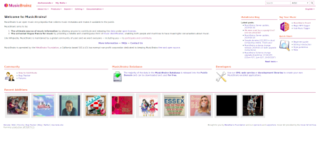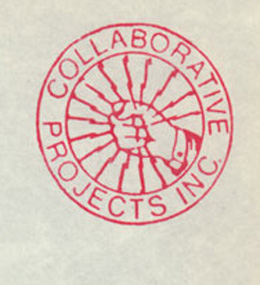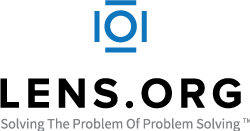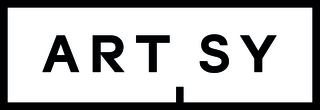
MusicBrainz is a MetaBrainz project that aims to create a collaborative music database that is similar to the freedb project. MusicBrainz was founded in response to the restrictions placed on the Compact Disc Database (CDDB), a database for software applications to look up audio CD information on the Internet. MusicBrainz has expanded its goals to reach beyond a CD metadata storehouse to become a structured online database for music.

The National Center for Biotechnology Information (NCBI) is part of the United States National Library of Medicine (NLM), a branch of the National Institutes of Health (NIH). It is approved and funded by the government of the United States. The NCBI is located in Bethesda, Maryland, and was founded in 1988 through legislation sponsored by US Congressman Claude Pepper.
Video game art is a specialized form of computer art employing video games as the artistic medium. Video game art often involves the use of patched or modified video games or the repurposing of existing games or game structures, however it relies on a broader range of artistic techniques and outcomes than artistic modification and it may also include painting, sculpture, appropriation, in-game intervention and performance, sampling, etc. It may also include the creation of art games either from scratch or by modifying existing games. Notable examples of video game art include Cory Arcangel's Super Mario Clouds and I Shot Andy Warhol, Joseph Delappe's projects including "Dead in Iraq" and the "Salt Satyagraha Online: Gandhi's March to Dandi in Second Life," the 2004-2005 Rhizome Commissions "relating to the theme of games," Paolo Pedercini's Molleindustria games such as "Unmanned" and "Every Day the Same Dream", and Ian Bogost's "Cowclicker."

In information systems, a tag is a keyword or term assigned to a piece of information. This kind of metadata helps describe an item and allows it to be found again by browsing or searching. Tags are generally chosen informally and personally by the item's creator or by its viewer, depending on the system, although they may also be chosen from a controlled vocabulary.

Geotagging, or GeoTagging, is the process of adding geographical identification metadata to various media such as a geotagged photograph or video, websites, SMS messages, QR Codes or RSS feeds and is a form of geospatial metadata. This data usually consists of latitude and longitude coordinates, though they can also include altitude, bearing, distance, accuracy data, and place names, and perhaps a time stamp.
Pandora is a subscription-based music streaming service owned by Sirius XM Holdings based in Oakland, California, United States. The service carries a focus on recommendations based on the "Music Genome Project" — a means of classifying individual songs by musical traits. The service originally launched in the consumer market as an internet radio service, which would generate personalized channels based on these traits and songs liked by the user; this service is available in an advertising-supported tier, and a subscription-based version. In 2017, the service launched Pandora Premium, an on-demand version of the service more in line with contemporary competitors.
The Music Genome Project is an effort to "capture the essence of music at the most fundamental level" using various attributes to describe songs and mathematics to connect them together into an interactive map. The Music Genome Project covers five music genres: Pop/Rock, Hip-Hop/Electronica, Jazz, World Music, and Classical.

Colab is the commonly used abbreviation of the New York City artists' group Collaborative Projects, which was formed after a series of open meetings between artists of various disciplines.

The Lens, formerly called Patent Lens, is an online patent and scholarly literature search facility, provided by Cambia, an Australia-based non-profit organization. The Lens has been hailed as the “most comprehensive scholarly literature database, that exceeds in its width and depth two leading commercial databases combined”. The Lens is an agglomeration database, that takes bibliometric data from other databases and combines them into one, deduplicated and with unified search syntax. Also, unlike the competing databases, The Lens allows data exporting in JSON format with a superior granularity compared to RIS and CSV formats.
The steve.museum project was a collaborative effort to improve public access to and engagement with US art museum collections. It explored the possibilities of user-generated descriptions of works of art, also known as folksonomy. Project staff in 2011 comprised a group of volunteers, mostly from art museums, including the Guggenheim Museum, the Cleveland Museum of Art, the Metropolitan Museum of Art and the San Francisco Museum of Modern Art, as well as Archives & Museum Informatics.

Metadata is "data that provides information about other data", but not the content of the data, such as the text of a message or the image itself. There are many distinct types of metadata, including:
The Movie Genome is an approach to indexing movies based on attributes in order to create movie catalogs with extensive, detailed data about each title.
Jinni was a website-based search engine and recommendation engine for movies, TV shows and short films. The service was powered by the Entertainment Genome, an approach to indexing titles based on attributes like mood, tone, plot, and structure. As of 2015, it was no longer available to the public, but is reportedly available via API and business-to-business licensing, where it reportedly impacts businesses like Comcast's Xfinity product, as well as other businesses using "smart" entertainment search.
Folksonomy is a classification system in which end users apply public tags to online items, typically to make those items easier for themselves or others to find later. Over time, this can give rise to a classification system based on those tags and how often they are applied or searched for, in contrast to a taxonomic classification designed by the owners of the content and specified when it is published. This practice is also known as collaborative tagging, social classification, social indexing, and social tagging. Folksonomy was originally "the result of personal free tagging of information [...] for one's own retrieval", but online sharing and interaction expanded it into collaborative forms. Social tagging is the application of tags in an open online environment where the tags of other users are available to others. Collaborative tagging is tagging performed by a group of users. This type of folksonomy is commonly used in cooperative and collaborative projects such as research, content repositories, and social bookmarking.
Cartrain, often stylised cartяain, is a British artist associated with the graffiti urban art movement.

Artsy, formally known as Art.sy Inc is a New York City based online art brokerage. Its main business is developing and hosting website for numerous galleries as well as selling art for them. It utilizes a search engine and database to draw connections and map relationships among works of art.

Slave Labour is a mural that was painted by a British graffiti artist, Banksy, on the side wall of a Poundland store in Wood Green, London in May 2012. The artwork is 48 inches (122 cm) high by 60 inches (152 cm) wide, and depicts an urchin child at a sewing machine assembling a bunting of Union Jack patches. The work was a protest against the use of sweatshops to manufacture Diamond Jubilee and London Olympics memorabilia in 2012.
Gegham Aleksanyan is an Armenian-born artist working in the United States since 2004.
Liz Glynn is an American artist. She is originally from Boston and now works out of Los Angeles. Much of her work is sculptural and installation-based, incorporating found objects and materials. Her work deals with institutional critique, collecting practices, antiquity, monument-building, and the concept of material value. Many of her installations encourage public engagement and participatory performance among her audiences. She is represented by Paula Cooper Gallery in New York.

Austin Irving is an American contemporary artist and photographer.










